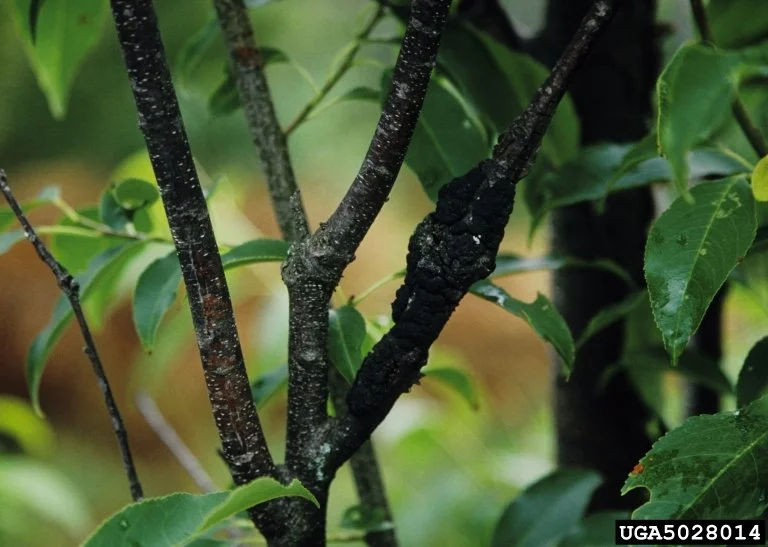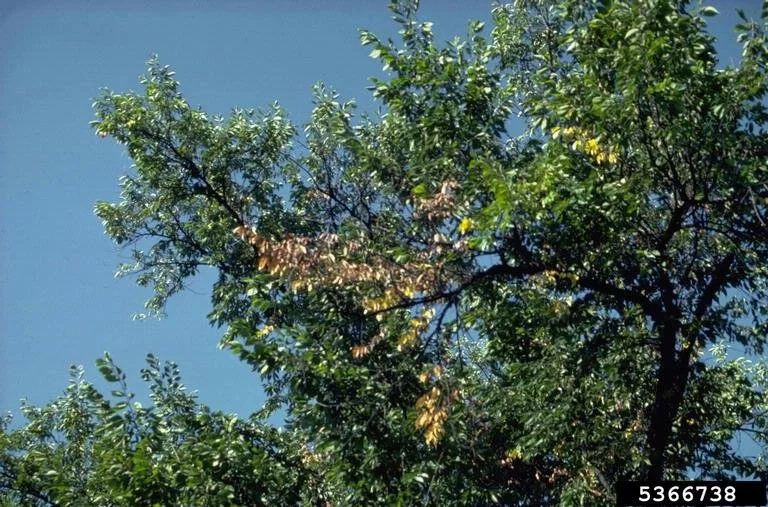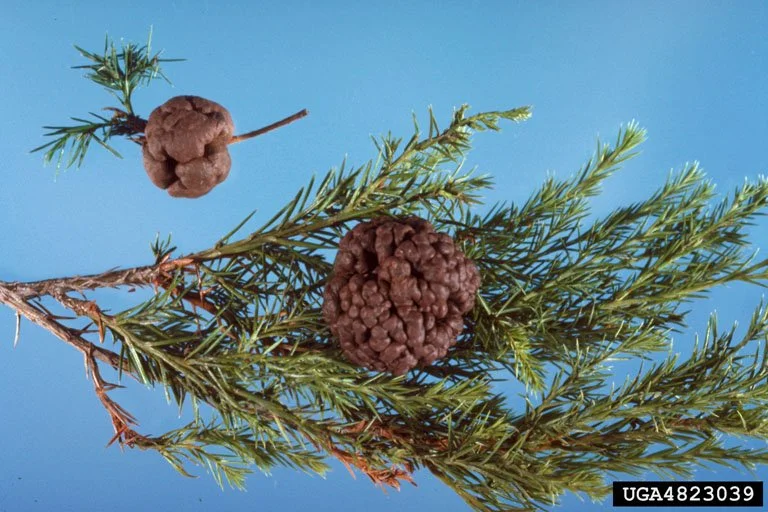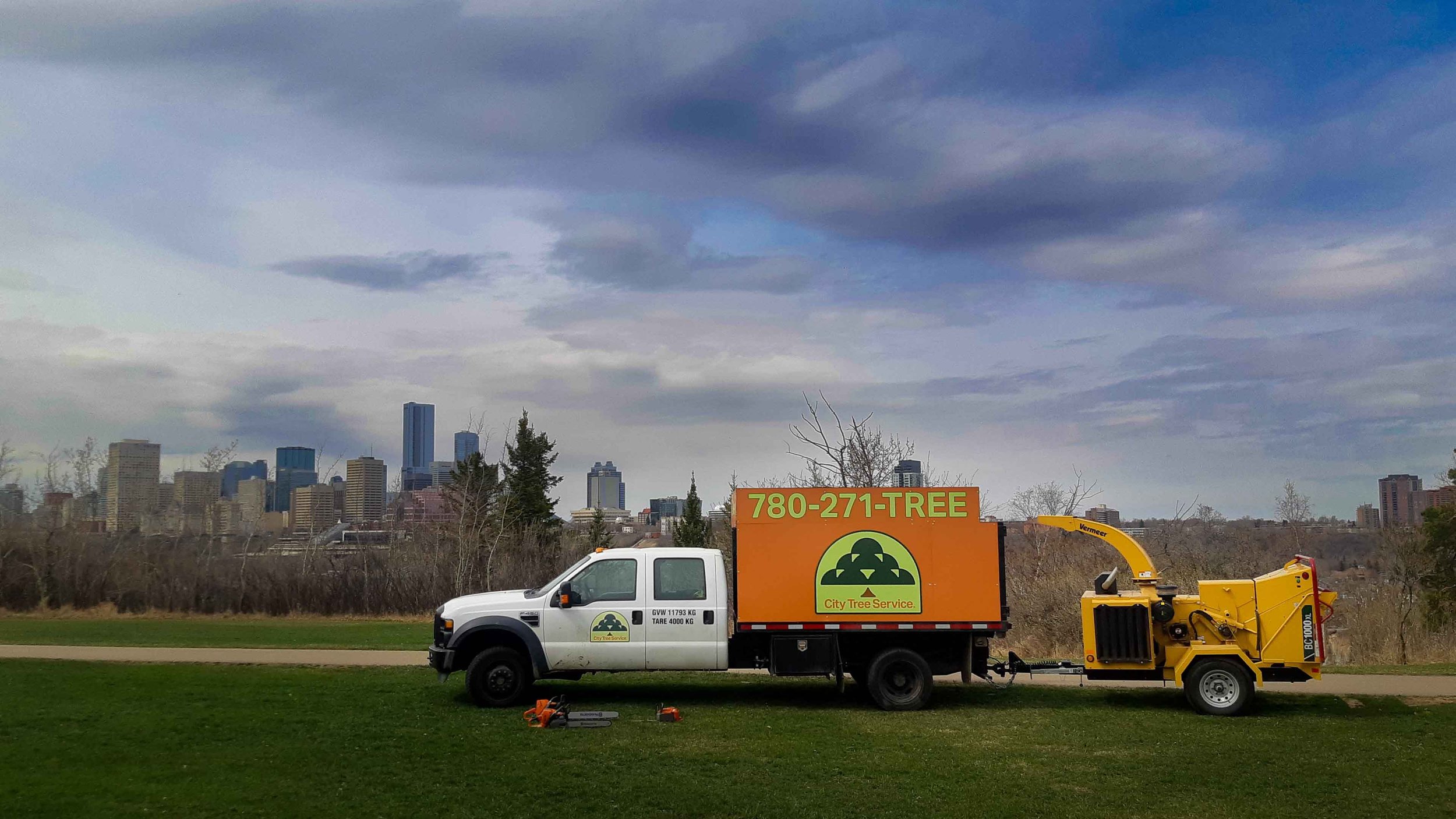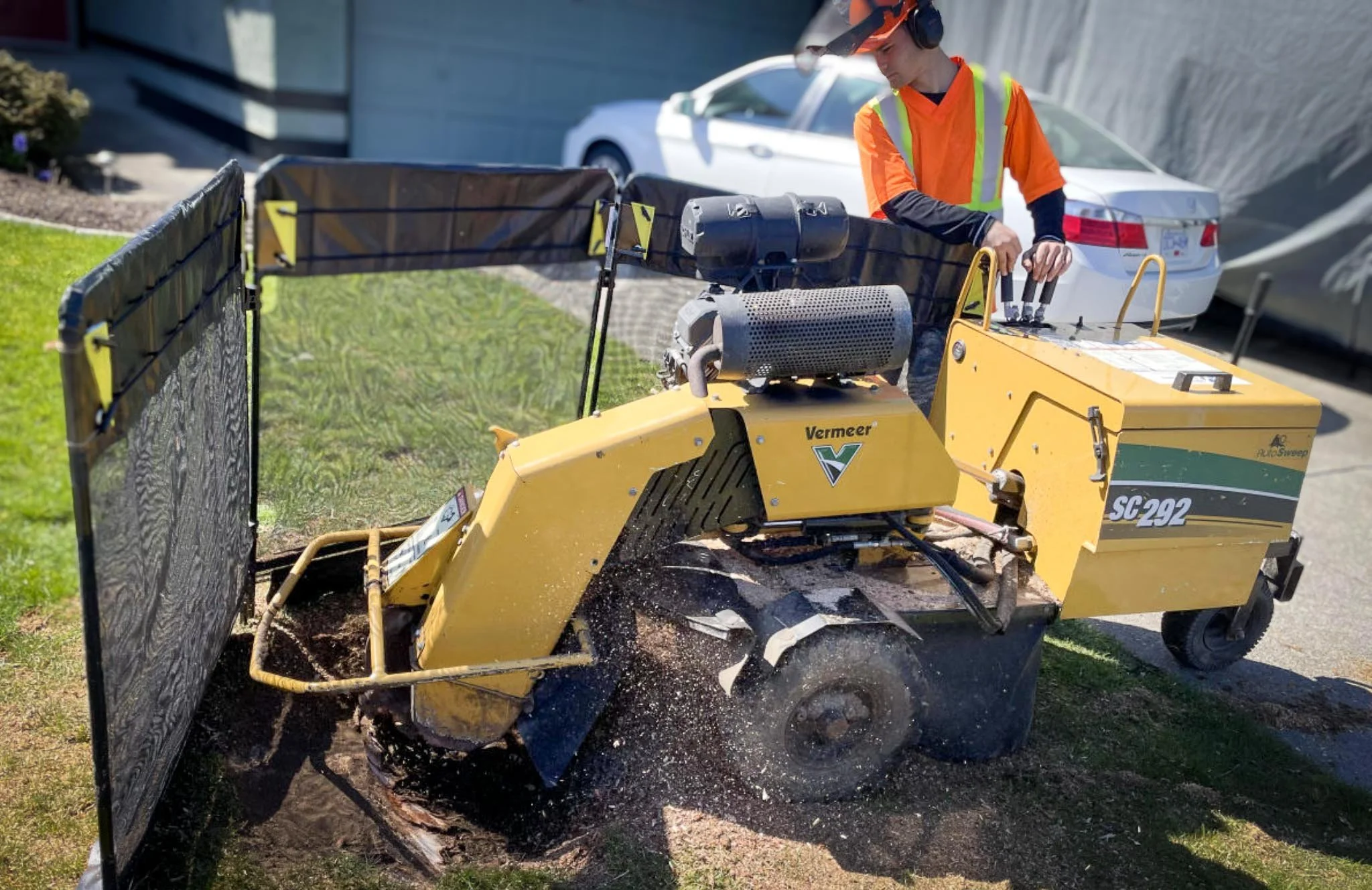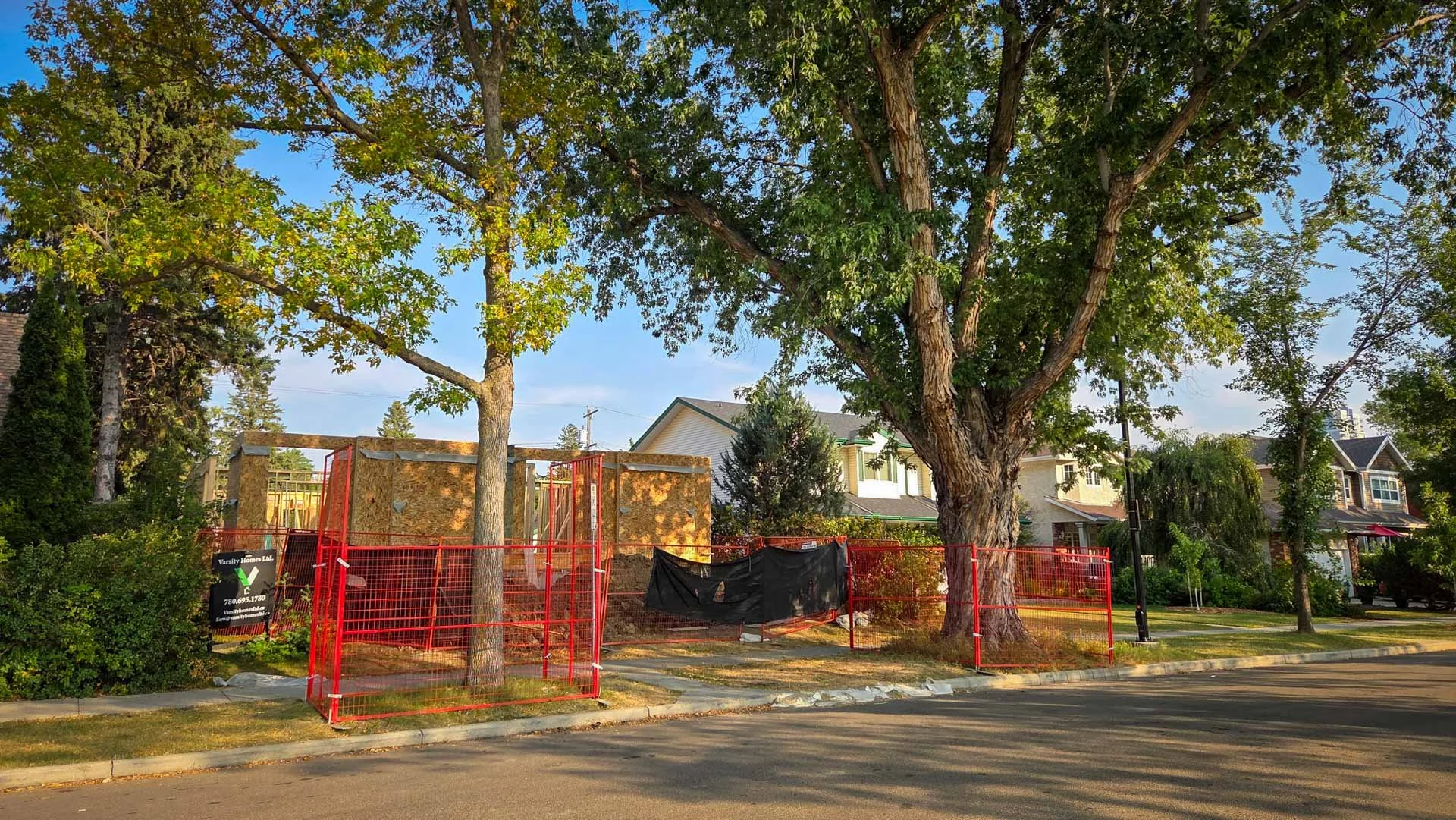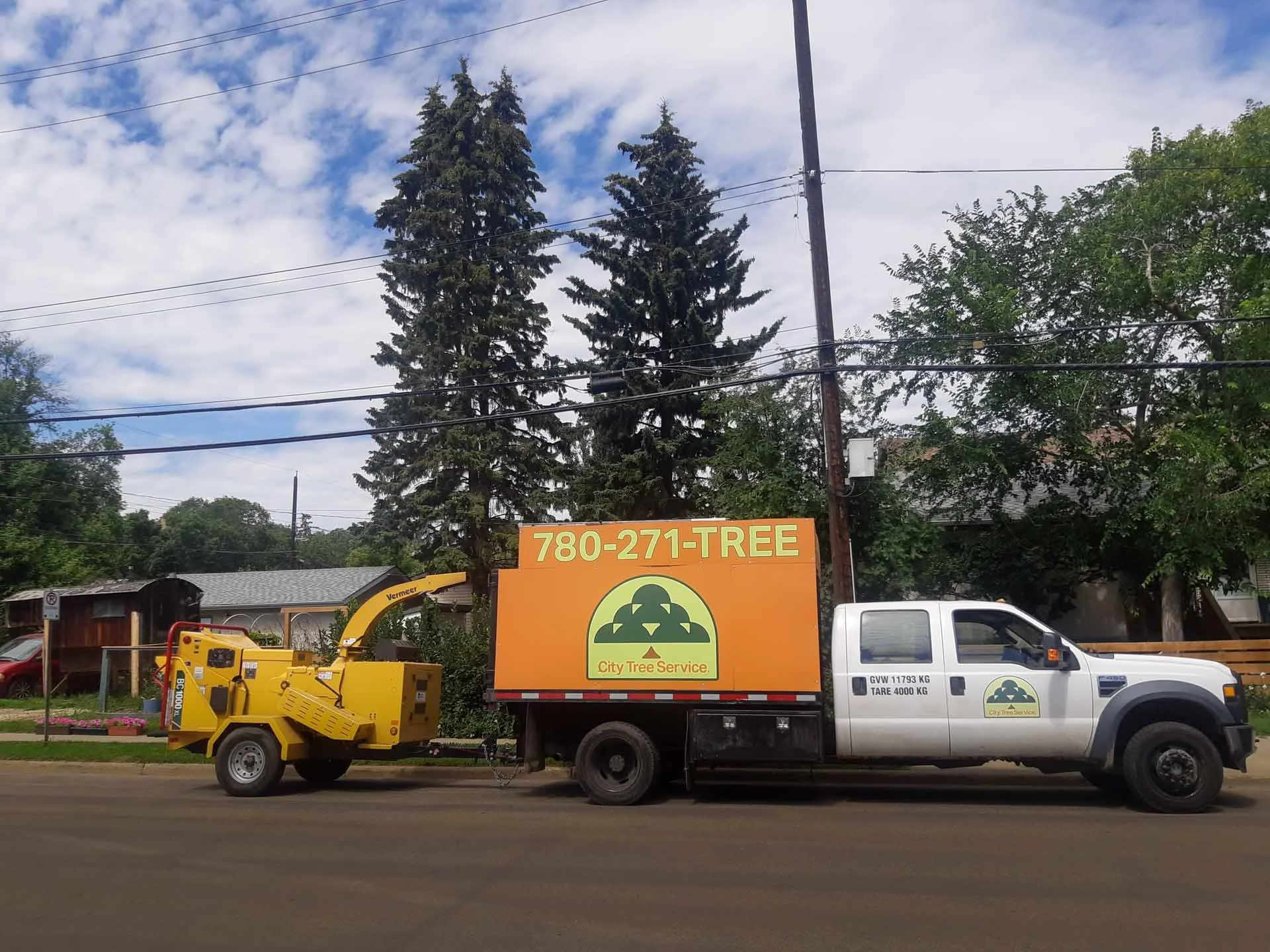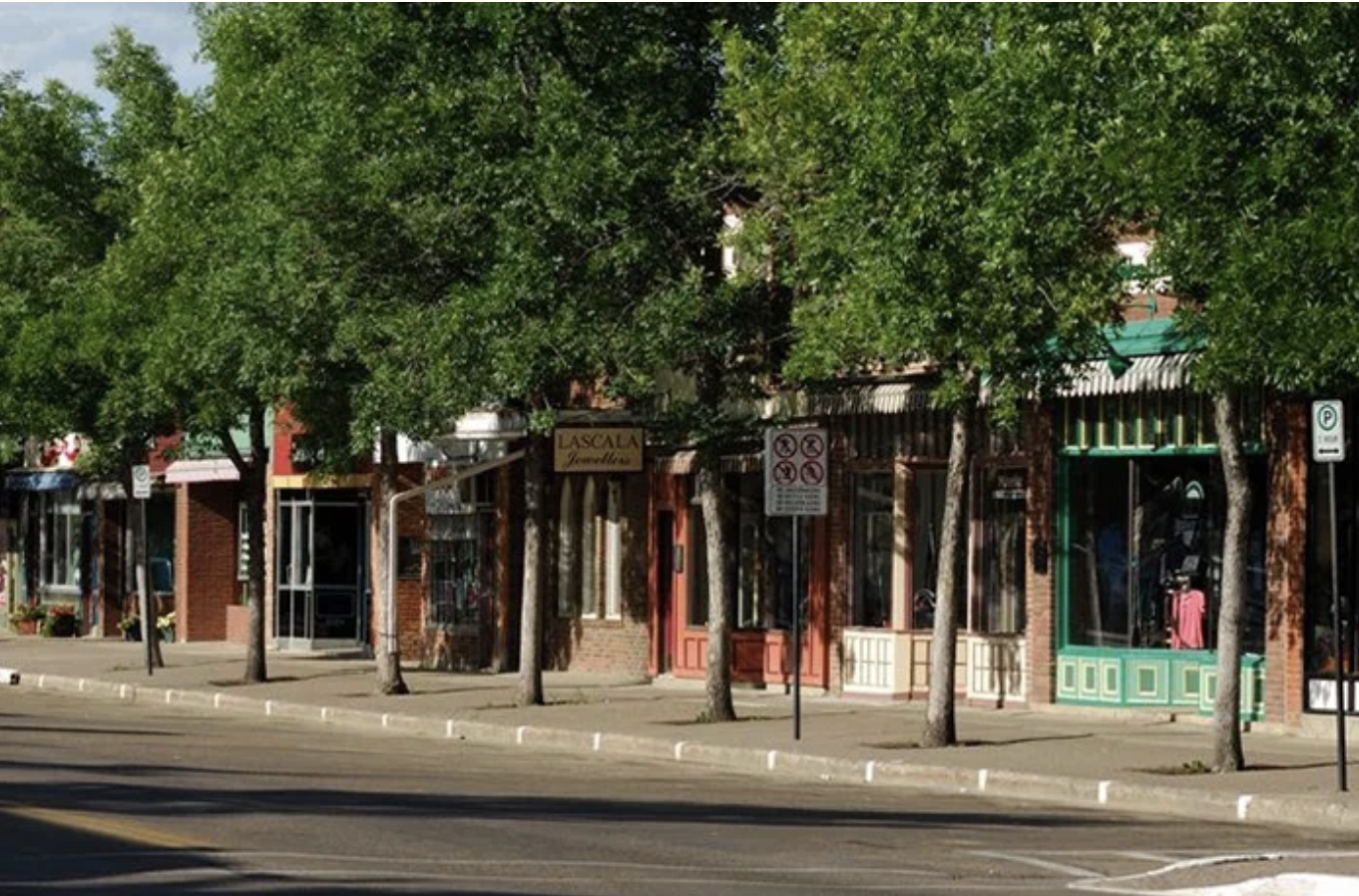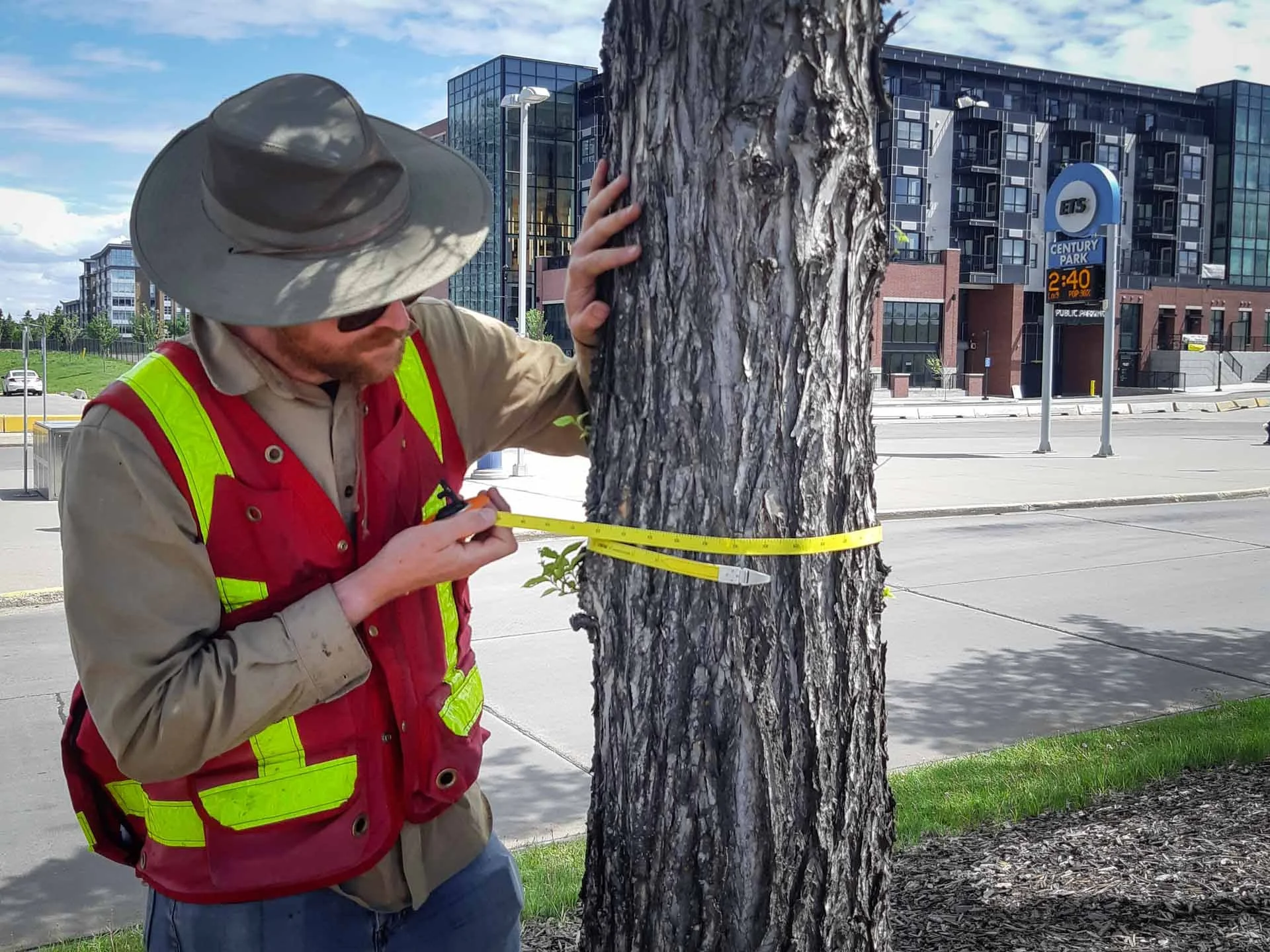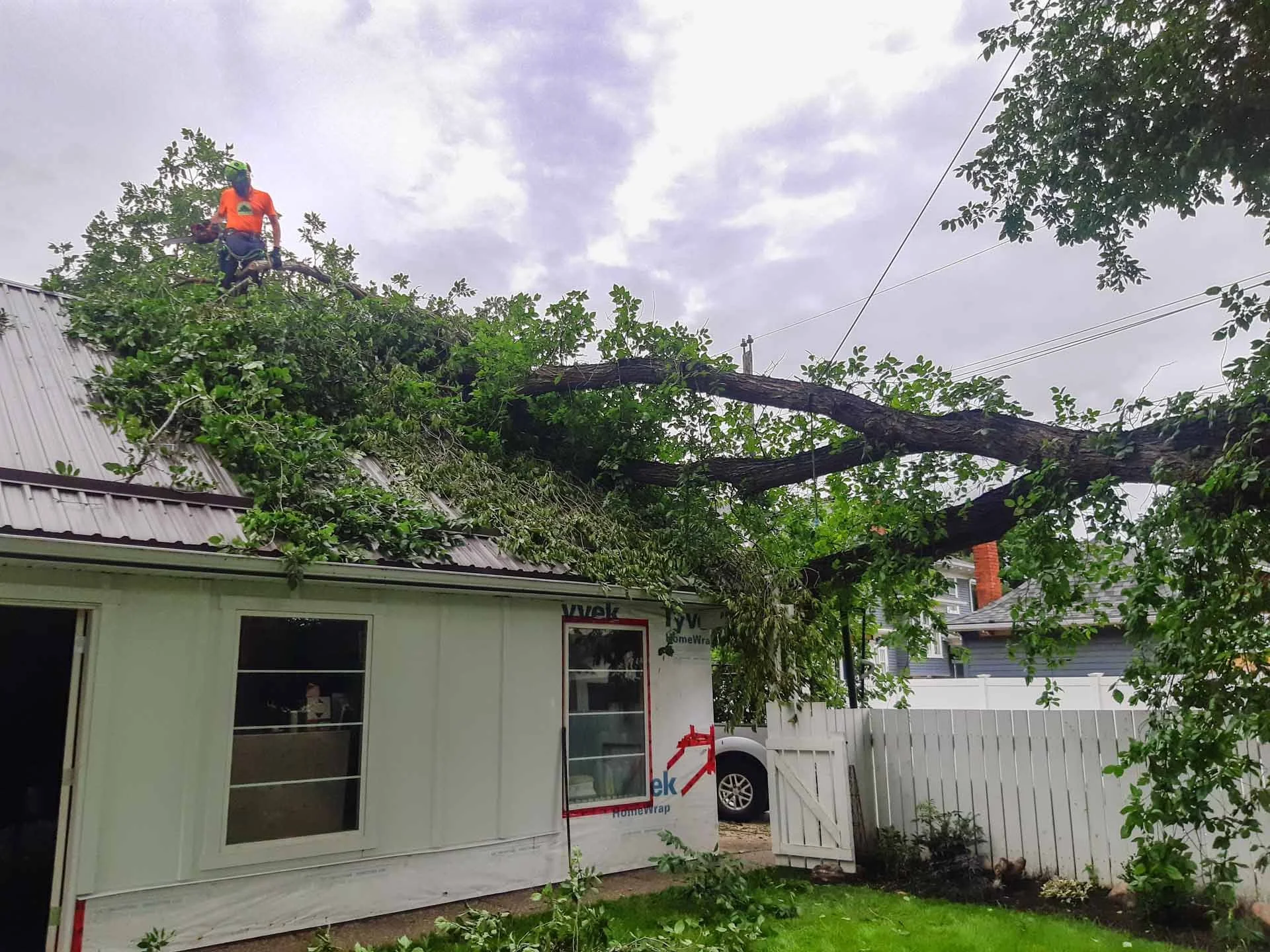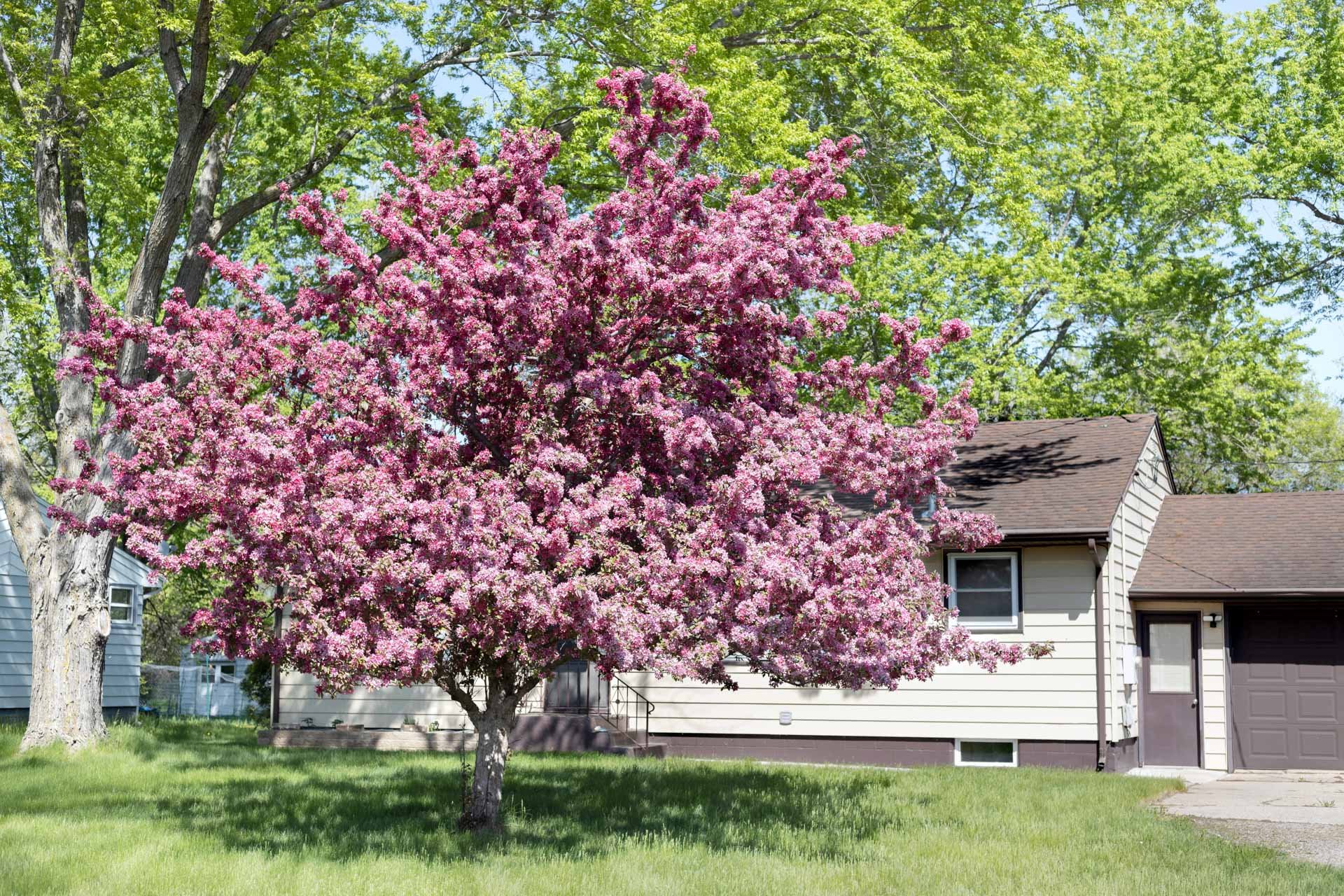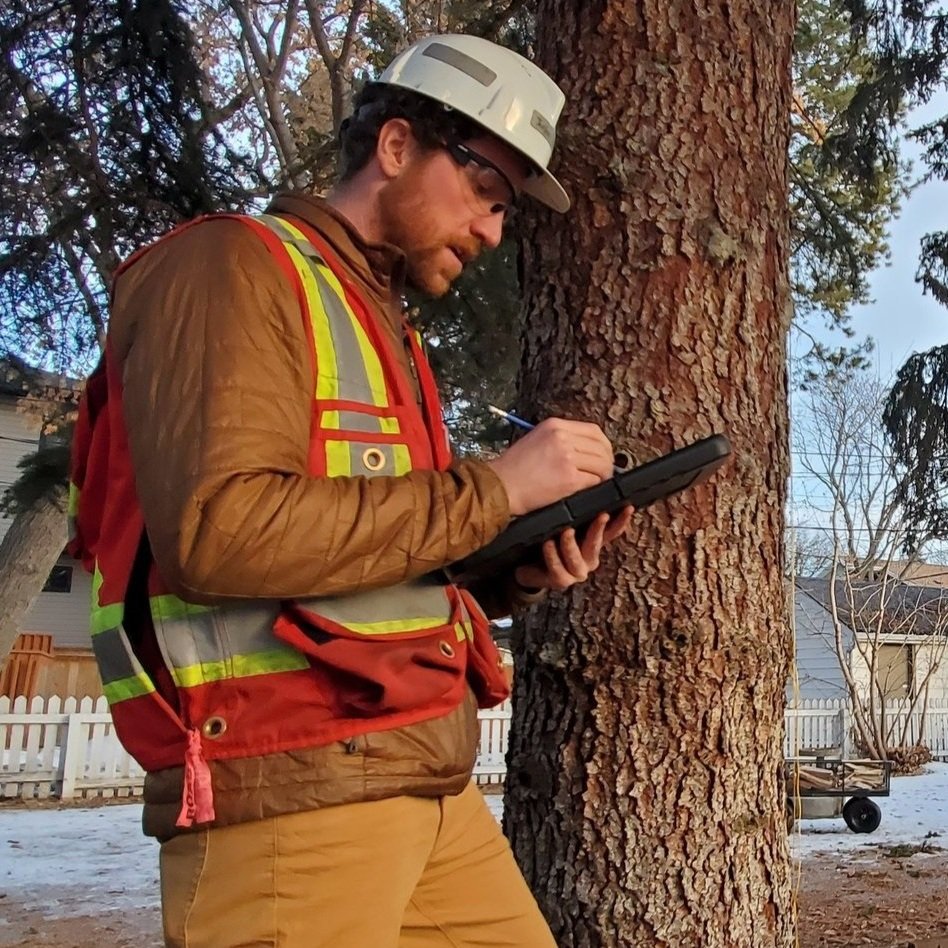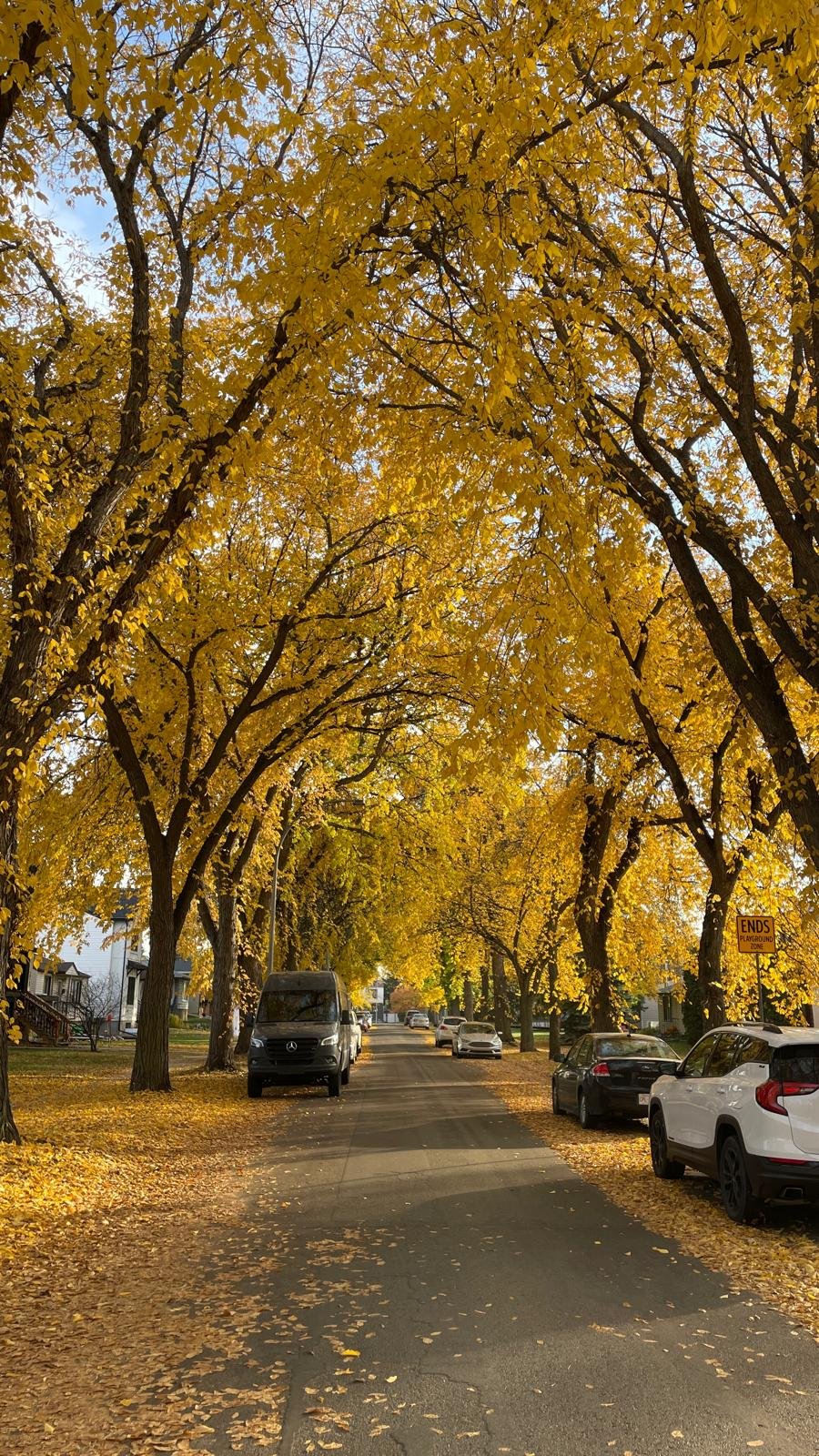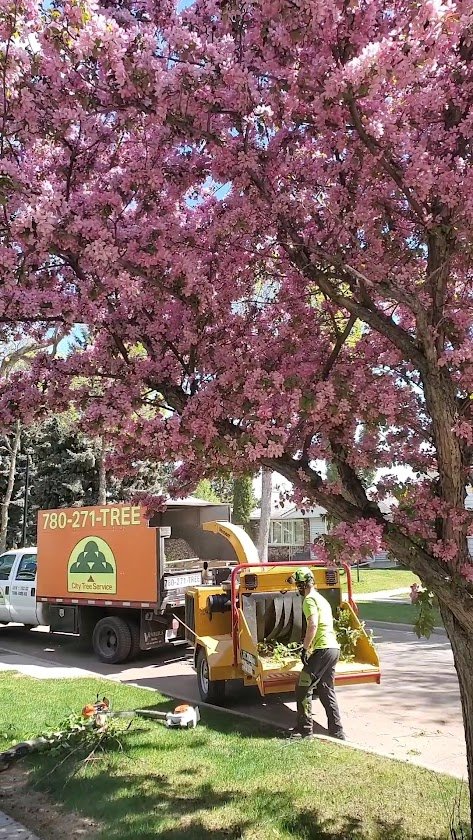Common Tree Diseases in Edmonton (and How to Treat Them)
Table of Contents
Introduction: Spot the Signs, Save the Tree
Edmonton’s trees face a range of threats from local pests and diseases. Whether you’re a homeowner with an affected backyard maple or a municipal manager overseeing public green space, early detection is key to treatment and prevention.
In most cases, a disease on a deciduous (leafy) tree that affects only the leaves is not a major concern — trees can typically recover by producing new foliage. The most serious threats are diseases that affect the stem or root system, as they can compromise structural integrity or long-term health.
This guide highlights the most common tree diseases and pests in the Edmonton region, how to identify them, and what actions to take to preserve your trees and urban canopy.
Common Tree Diseases in Edmonton
Below are six of the most common tree diseases and pest issues affecting Edmonton’s trees. Learn how to spot each one and what actions you can take to manage them.
1. Black Knot
Joseph OBrien, USDA Forest Service, Bugwood.org
Licensed under a Creative Commons Attribution 3.0 License.
Black knot is one of the most common and visually distinctive diseases affecting ornamental trees in Edmonton. It targets species in the Prunus genus—especially Mayday and Schubert chokecherry—and if left untreated, it can gradually kill affected branches and entire trees. Early pruning is the best way to contain it.
Host trees: Mayday, Schubert chokecherry, and other cherry/plum species
Cause: Caused by the fungus Apiosporina morbosa
Symptoms: Elongated black, tar-like swellings on branches and twigs; often look like lumps of coal
Season: Most visible in winter and early spring before leaf-out
Spread: Spores are released during wet spring conditions and spread by wind, rain, and insects
Treatment Tips:
Prune infected branches at least 6–8 inches below the knot (during late winter)
Disinfect pruning tools between each cut
Remove infected material and dispose of it responsibly. Composting may be acceptable in many cases, but avoid doing so if the material is still actively spreading spores or if your compost system doesn’t reach high enough temperatures to kill pathogens.
The City of Edmonton may collect properly bundled black knot material during waste pickup periods
Trees will not recover on their own — untreated trees can eventually die from the disease
City Tree Service can help assess severity and safely prune during the correct window.
Learn more from the City of Edmonton →
2. Fire Blight
Don Ferrin, Louisiana State University Agricultural Center, Bugwood.org
Licensed under a Creative Commons Attribution 3.0 License.
Fire blight is a fast-spreading bacterial disease that affects trees in the rose family. In Edmonton, it’s frequently seen on apple, crabapple, pear, mountain ash, and cotoneaster. The infection can damage entire limbs and blossom clusters, giving trees a scorched appearance. Because it spreads rapidly in warm, wet weather, timely pruning is essential.
Host trees: Apple, crabapple, mountain ash, pear, cotoneaster (and other members of the rose family)
Cause: Caused by the bacterium Erwinia amylovora
Symptoms: Brown, scorched-looking leaves and twigs; blackened flowers; dieback in a “shepherd’s crook” shape; oozing of bacterial slime from infected tissue during humid conditions
Season: Spring to early summer, especially during warm, wet weather
Spread: Bacteria are spread by rain, wind, insects, and unsterilized pruning tools
Treatment Tips:
Prune affected limbs at least 12 inches below visible damage, ideally during dry weather
Sanitize pruning tools between cuts with a 10% bleach solution or rubbing alcohol
Avoid high-nitrogen fertilizers, which promote susceptible new growth
Remove infected branches from the property — do not compost
Monitor nearby trees closely during the growing season
Fire blight is aggressive and often reoccurs, so annual monitoring and timely pruning are critical.
City of Edmonton Fire Blight Info →
3. Leaf Miners & Aphids
Whitney Cranshaw, Colorado State University, Bugwood.org
Licensed under a Creative Commons Attribution 3.0 License.
Leaf miners are generally not a serious concern. While they may make leaves look unsightly, they very rarely require treatment and almost never cause long-term harm. Aphids, on the other hand, are common and can weaken trees over time if left unchecked — but many infestations resolve naturally or with minimal intervention.
Host trees: Many deciduous species, including elm, birch, maple, and ash
Cause: Leaf miners are insect larvae that tunnel through leaves; aphids are small sap-sucking insects
Symptoms: Leaf miners leave squiggly trails or blotches; aphids cause curled, yellowing, or sticky leaves from excess sap (honeydew)
Season: Spring through summer, with multiple life cycles in warm weather
Spread: Spread by adult insects flying between trees or overwintering eggs hatching in spring
Treatment Tips:
Hose off aphids with a strong stream of water early in the infestation
Use insecticidal soap or horticultural oil as needed — apply in the early morning or evening
Encourage beneficial predators like ladybugs and lacewings
Prune heavily infested branches and dispose of them
Leaf miners are generally not a serious concern. While they may make leaves look unsightly, they very rarely require treatment and almost never cause long-term harm. Aphids may weaken trees over time if left unchecked, but many infestations resolve naturally or with minimal intervention.
4. Dutch Elm Disease (DED)
William Jacobi, Colorado State University, Bugwood.org
Licensed under a Creative Commons Attribution 3.0 License.
Dutch Elm Disease is one of the most important tree diseases in North America. Although not widespread in Edmonton yet, its potential impact is significant. We have also published a separate blog post on Edmonton’s elm trees → with more context.
Host trees: All elm species
Cause: Caused by the fungus Ophiostoma novo-ulmi, spread by elm bark beetles
Symptoms: Sudden yellowing, curling, and wilting of leaves on one or more branches; brown streaking in sapwood beneath the bark; rapid dieback
Season: Active from late spring through summer when beetles are feeding
Spread: Spread via elm bark beetles and through grafted root systems
Edmonton Context:
Edmonton has had isolated cases of DED, but infection levels remain relatively low due to ongoing monitoring and preventative efforts
The City prohibits elm pruning between April 1 and September 30
Transporting or storing elm firewood is illegal in Alberta due to DED risk
Early detection and reporting are critical for containment
Prevention Tips:
Only prune elms during the dormant season: October 1 to March 31
Avoid creating wounds during beetle activity periods
Remove dead or dying elm branches promptly in winter
Report suspected cases to the City of Edmonton immediately
Dutch Elm Disease has devastated elm populations across North America. Strict prevention is the best defense — early action saves trees.
Official Dutch Elm Disease Page →
5. Cedar-Apple Rust
George Hudler, Cornell University, Bugwood.org
Licensed under a Creative Commons Attribution-Noncommercial 3.0 License.
Edward L. Barnard, Florida Department of Agriculture and Consumer Services, Bugwood.org
Licensed under a Creative Commons Attribution 3.0 License.
Cedar-apple rust is a unique fungal disease that requires two different host species — one from the cedar family and one from the apple/crabapple family — to complete its life cycle. While it rarely kills trees, it can significantly affect leaf health and fruit quality, especially during wet spring seasons when spores are actively spreading between hosts.
Host trees: Junipers (cedars) and apple/crabapple trees
Cause: Caused by the fungus Gymnosporangium juniperi-virginianae
Symptoms: Orange, gelatinous galls on junipers in spring; yellow-orange leaf spots on apples and crabapples
Season: Spring and early summer, especially after rain
Spread: Fungus alternates between juniper and apple trees, spreading via airborne spores
Treatment Tips:
Remove visible galls from junipers during late winter
Prune affected apple branches and dispose of them properly
Apply fungicides in early spring if infection was severe the previous year
Avoid planting susceptible apples and junipers near each other
Cedar-apple rust is fascinating because it requires two different host species — one from the juniper family and one from the apple family — to complete its life cycle. While often manageable with pruning and spacing, repeated outbreaks can affect fruit quality and tree vigour.
6. Apple Maggot
Whitney Cranshaw, Colorado State University, Bugwood.org
Licensed under a Creative Commons Attribution 3.0 License.
Apple maggot is very common in Edmonton and one of the most frequent issues homeowners ask us about. At City Tree Service, we also offer the installation of pheromone-scented sticky traps in apple trees to help monitor and reduce infestations.
Host trees: Apple, crabapple, cherry, and plum trees
Cause: Caused by the apple maggot fly (Rhagoletis pomonella), which lays eggs in fruit
Symptoms: Small dimples or track marks on the fruit surface; brown, mushy tunnels inside the fruit
Season: Summer, with peak activity from July to August
Spread: Adult flies emerge from the soil and lay eggs under the fruit’s skin
Treatment Tips:
Use sticky traps to monitor and reduce fly populations
Remove and destroy infested fruit from the ground and the tree
Avoid composting affected apples
Apple maggot infestations can ruin fruit quality and spread quickly if not addressed. With regular monitoring and the right preventative measures — including sticky traps — City Tree Service can help you protect your apple trees and enjoy a healthier harvest.
When to Call a Professional
For many tree diseases, early and expert intervention makes the difference between saving and losing a tree. City Tree Service offers:
On-site tree health assessments
Targeted pruning and disease management
Pest monitoring and prevention plans
We help both homeowners and municipalities manage Edmonton’s tree health with care and science-backed techniques.
Frequently Asked Questions
-
For minor issues like early aphid infestations, yes, this is appropriate. But for most fungal or bacterial infections, professional assessment and pruning are recommended to avoid spread and ensure proper cuts.
-
It depends on the disease and tree species. For elms, pruning outside the October–March window is illegal in Edmonton due to DED risk. In most other cases, winter pruning is safer and more effective.
-
Diseases like black knot and fire blight can spread and worsen over time, leading to loss of limbs or the entire tree. Even if symptoms appear minor, early intervention is usually more cost-effective and improves the odds of saving the tree.
While some issues like leaf miner damage may be purely cosmetic, others — especially fungal or bacterial diseases — can compromise long-term health if ignored.. Early removal of infected material prevents long-term damage.
-
Yes, but most diseases are species-specific. For example, Black Knot only affects chokecherry and other Prunus species, while Fire Blight impacts members of the rose family. That said, many fungal and bacterial diseases spread by wind, insects, or unclean tools. Disinfecting pruning equipment and handling infected material carefully remains essential to preventing further spread within vulnerable species.
-
We can assist with assessments and planning, but public trees require permits or coordination with municipal authorities. We’re happy to advise and help navigate this.
Book a Tree Health Check
📞 Call: 780 271 8733
📧 Email: info@citytree.ca
Whether you're concerned about a single backyard tree or overseeing municipal canopy health, our certified arborists are here to help. We’ll provide honest assessments, practical solutions, and preventative care to keep Edmonton's trees thriving.


